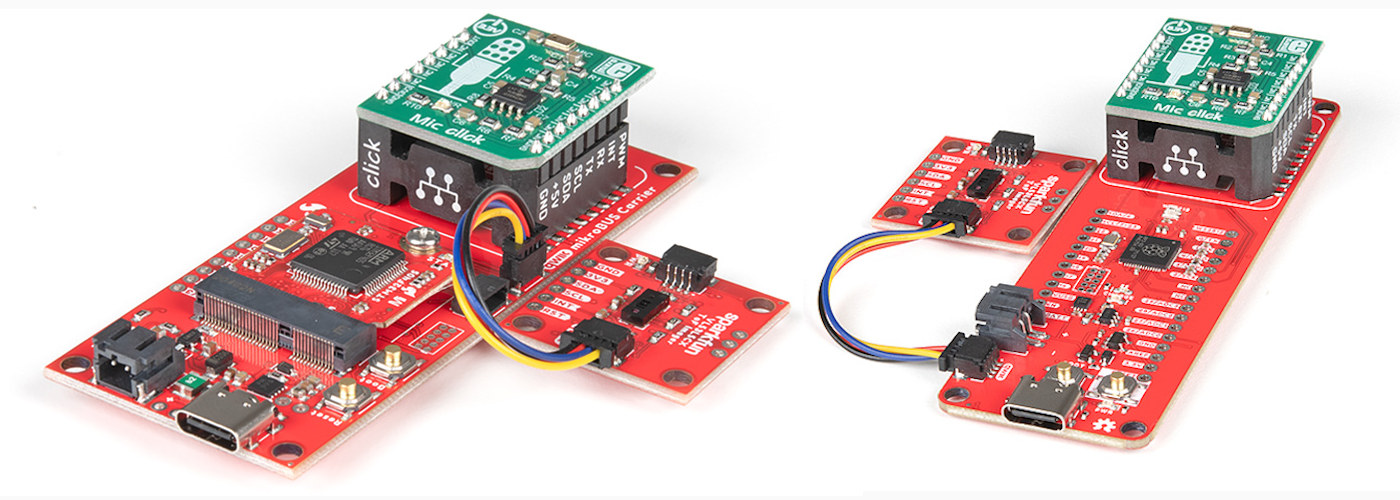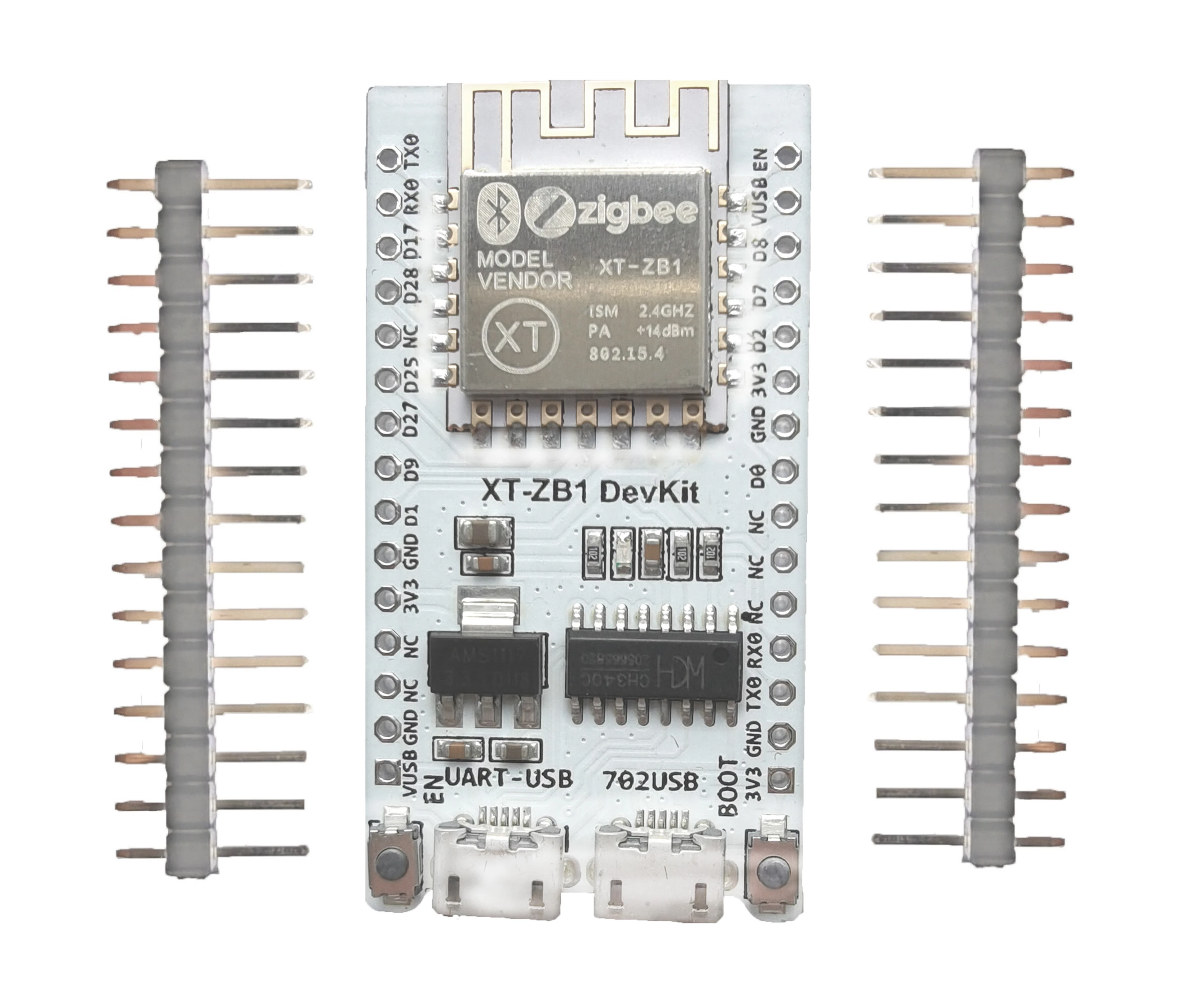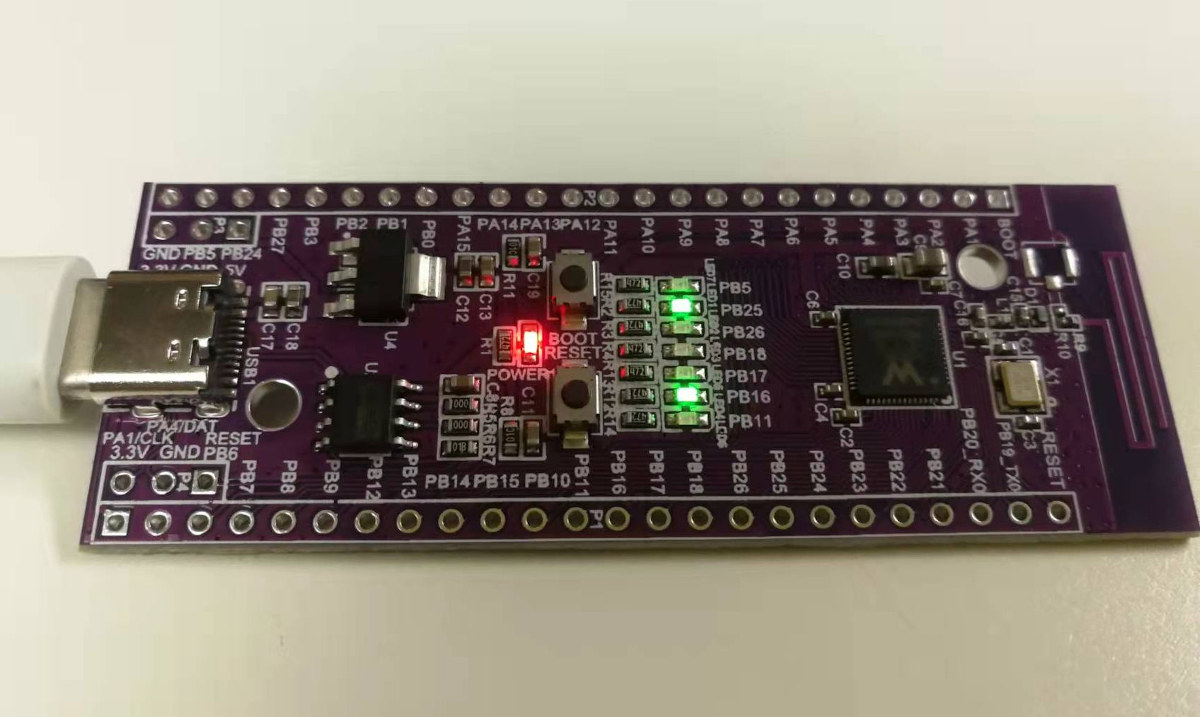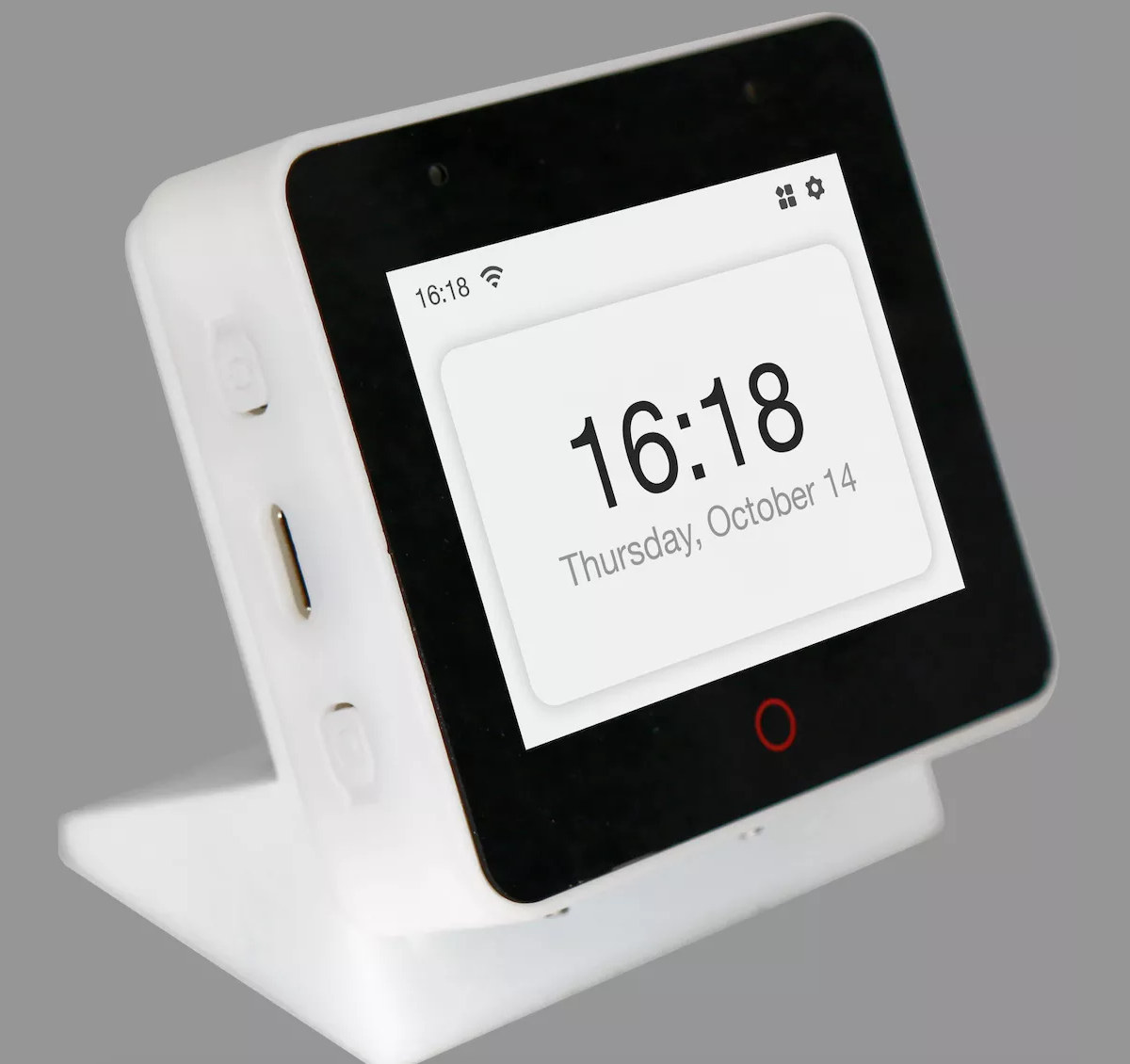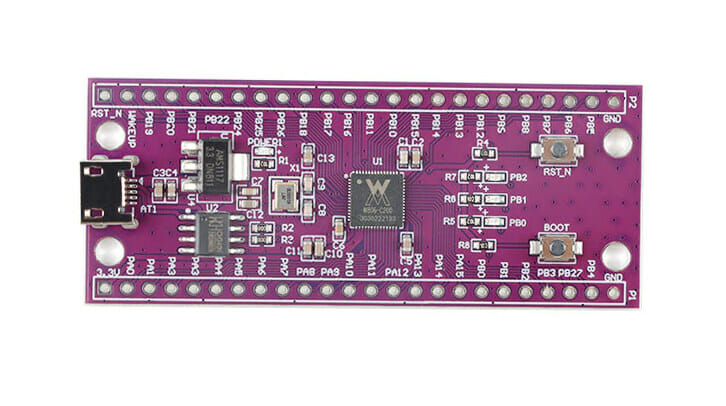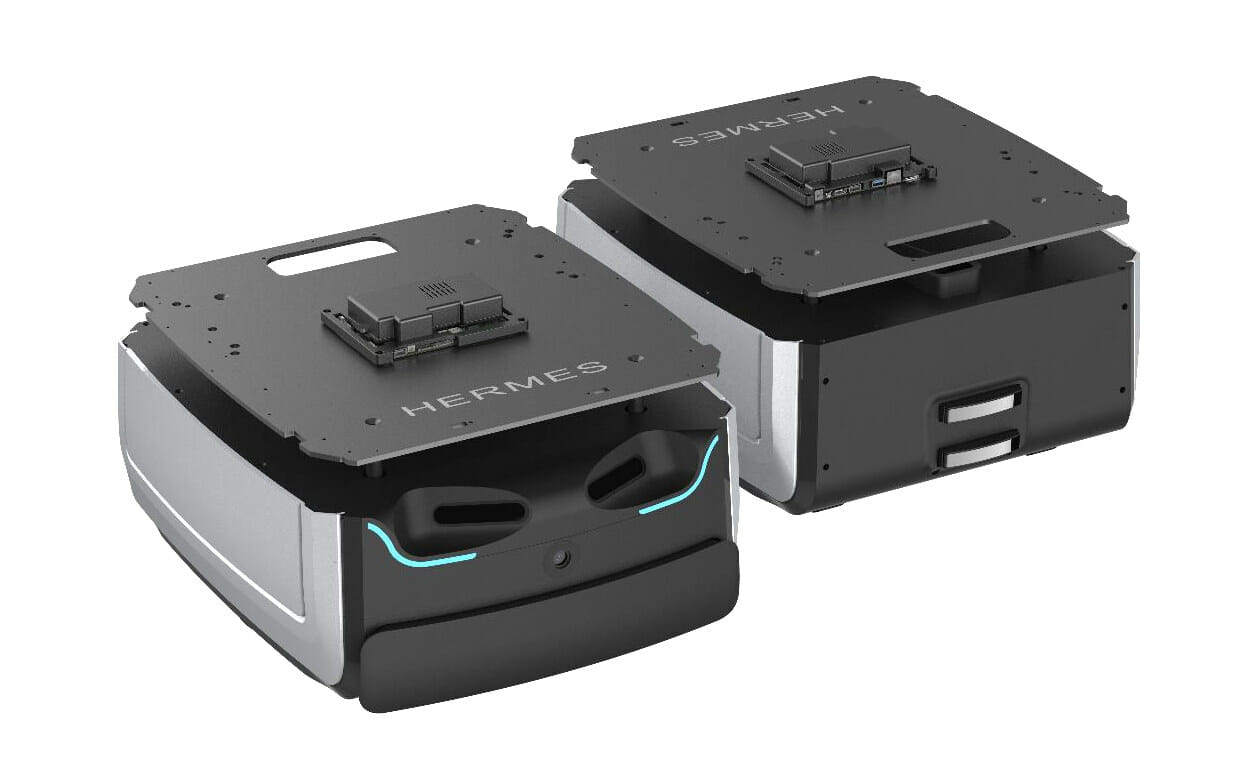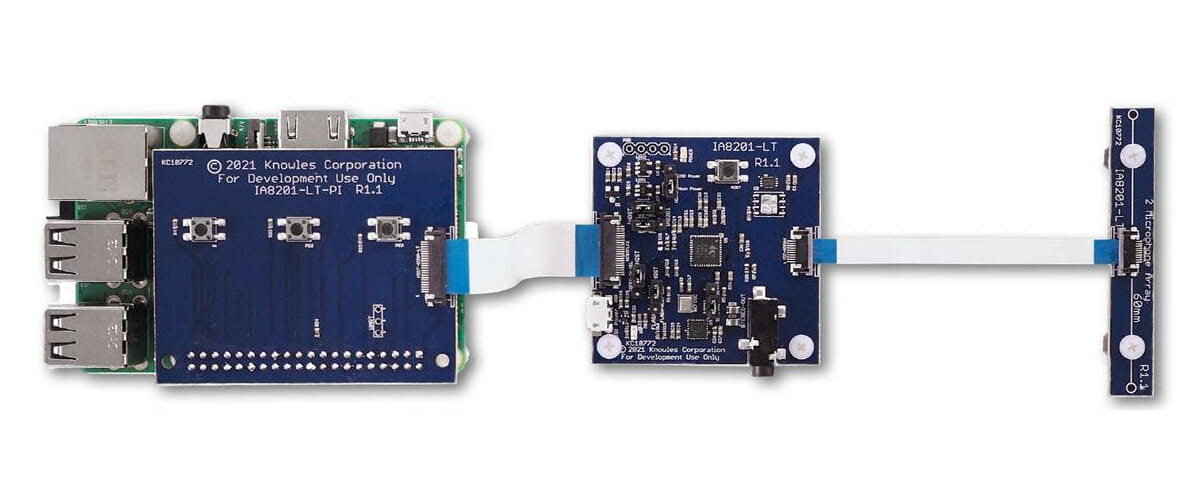We’ve previously written articles about boards featuring the mikroBUS interface supporting thousands of Click expansion boards from Mikroelectronika, and now the company has collaborated with Sparkfun who launched MicroMod and Raspberry Pi RP2040-based boards with a mikroBUS socket, plus Qwicc connectors. Raspberry Pi RP2040 is the well-known dual-core Arm Cortex-M0+ microcontroller found in Raspberry Pi Pico and a range of third-party boards, while Sparkfun MicroMod‘s are M.2 MCU modules with chips from Microchip, Nordic Semi, Ambiq, Espressif Systems, and NXP. Sparkfun RP2040 mikroBUS development board specifications: MCU – Raspberry Pi RP2040 dual-core Cortex M0+ microcontroller up to 133 MHz with 264 KB SRAM Storage – 16MB QSPI flash, MicroSD card socket (on the bottom side) USB – USB Type-C port Expansion mikroBUS Socket 2x Qwiic connectors Thing Plus (or Feather) pin form factor with 18 GPIO pins including up to 4x 12-bit ADC, up to 8x 2-channel PWM, up to […]
$1.8 XT-ZB1 Zigbee & BLE devkit features BL702 RISC-V module
Bouffalo Labs BL702 is a 32-bit RISC-V microcontroller with a 2.4 GHz radio for Zigbee 3.0 and Bluetooth 5.0 LE connectivity that we first found in the Sipeed RV-Debugger Plus UART & JTAG debug board that did not make use of the radio at all. But a BL702 development kit was brought to my attention, with the XT-ZB1 devkit equipped with a Zigbee & BLE module of the same name, and sold for just $1.80 per unit on Aliexpress. Shipping adds $4.63 where I live, but they also offer packs of 5 or 10 with the same shipping fee, meaning if you buy 10 the total cost should be around $22 including shipping, or around $2.2 per board. Alternatively, the module alone goes for $1. XT-ZB1 devkit specifications: XT-ZB1 wireless module with MCU – BL702C 32-bit RISC-V microcontroller @ 144 MHz with FPU, 132KB RAM, 192KB ROM, 1Kbit eFuse Storage […]
Imagination introduces Catapult RISC-V CPU cores
As expected, Imagination Technologies is giving another try to the CPU IP market with the Catapult RISC-V CPU cores following their previous unsuccessful attempt with the MIPS architecture, notably the Aptiv family. Catapult RISC-V CPUs are/will be available in four distinct families for dynamic microcontrollers, real-time embedded CPUs, high-performance application CPUs, and functionally safe automotive CPUs. The new 32-/64-bit RISC-V cores will be scalable to up to eight asymmetric coherent cores-per cluster, offer a “plethora of customer configurable options”, and support optional custom accelerators. What you won’t see today are block diagrams and detailed technical information about the cores because apparently, all that information is confidential even though some Catapult RISC-V cores are already shipping “in high-performance Imagination automotive GPUs”. The only way to get more details today is to sign an NDA. Having said that we have some more information about the target markets and development tools. Imagination Capapult […]
HLK-W801 board features Alibaba Xuantie XT804 based MCU with WiFi 4, Bluetooth LE 4.2
Earlier this month, we wrote about the 240 MHz WinnerMicro W806 Alibaba Xuantie XT804 C-Sky microcontroller with 1MB flash, 288KB SRAM found in the $2 HLK-W806 development board. But the company has a nearly identical WinnerMicro W801 microcontroller that bumps the internal flash to 2MB, and more importantly adds a 2.4 GHz radio with WiFi 4 and Bluetooth LE 4.2 connectivity, and HiLink also released the HLK-W801 board that’s nearly identical to HLK-W806, except for some extra LEDs, a USB-C port instead of a Micro USB port, and a longer form factor to make space for the PCB antenna. HLK-W801 board specifications: MCU – WinnerMicro W801 32-bit Alibaba XT804 microcontroller @ 240 MHz with 2MB Flash, 288KB RAM, FPU, DSP, crypto engine, 2.4 GHz radio Connectivity 802.11b/g/n WiFi 4 up to 150 Mbps supporting station, soft AP and station+soft AP modes, WPA2 security Bluetooth 4.2 Expansion – 2x 24-pin headers […]
Espressif introduces ESP32-S3-BOX AI development kit for online and offline voice applications
Espressif Systems has very recently introduced the ESP32-S3-BOX AI voice devkit designed for the development of applications with offline and online voice assistants, and whose design I find similar to the M5Stack Core2 devkit, but the applications will be different. The ESP32-S3-BOX features the latest ESP32-S3 processor with WiFi and BLE connectivity, AI capabilities, as well as a 2.4-inch capacitive touchscreen display, a 2-mic microphone array, a speaker, and I/O connectors with everything housed in a plastic enclosure with a stand. ESP32-S3-BOX specifications: WiSoC – ESP32-S3 dual-core Tensilica LX7 up to 240 MHz with Wi-Fi & Bluetooth 5, AI instructions, 512KB SRAM Memory and Storage – 8MB octal PSRAM and 16MB QSPI flash Display – 2.4-inch capacitive touchscreen display with 320×240 resolution Audio – Dual microphone, speaker USB – 1x USB Type-C port for power and debugging (JTAG/serial) Expansion – 2x Pmod-compatible headers for up to 16x GPIOs Misc Power […]
WinnerMicro W806 240 MHz MCU finds it way into a $2 development board
I’ve just been notified about an inexpensive board (HLK-W806) based on WinnerMicro W806 32-bit XT804 (XuanTie E804) microcontroller clocked at up to 240 MHz and equipped with 1MB flash and 288KB RAM. XuanTie is the microcontroller family from Alibaba’s subsidiary T-Head Semiconductor, notably XuanTie RISC-V cores, but I’ve just learned not all XuanTie cores are based on the RISC-V architecture, and as we’ll see below, Xuantie E804 core appears to be based on the C-Sky architecture. It may still be interesting, as it’s in the STM32 board price range (pre-2020), but with a much higher frequency, so let’s have a look. HLK-W806 development board specifications: MCU – WinnerMicro W806 32-bit XT804 microcontroller @ 240 MHz with 1MB Flash, 288KB RAM, FPU, DSP, crtypto engine Expansion – 2x 24-pin headers with (based on MCU specs) 1x SDIO host with support for SDIO 2.0, SDHC, MMC 4.2 1x SDIO device up to […]
RK3399-based programmable wheeled robot works across multiple floors
SLAMTEC Hermes robot platform is a programmable wheeled robot that can take payloads of up to 60 kg across multiple floors thanks to an optional elevator controller, which makes it suitable for hotels, hospitals, airports, warehouses, transportation hubs, surveillance robot, and more. Powered by a Rockchip RK3399 mainboard, the Hermes robot platform supports autonomous path-finding, robot collaboration, cross-floor delivery, smart obstacle avoidance, safety features, and autonomous Recharging. It can be controlled with a REST API, programmed with C++ SDK, or a program called RoboStudio available for Windows and Android. Hermes wheeled robot platform specifications: Mainboard – Rockchip RK3399 SBC Video Output – HDMI Audio – 3.5mm audio (mic+headphone) jack, dual-channel 5W/8Ω amplifier header Network connectivity – Gigabit Ethernet RJ45 port, dual-band WiFi, 4G cellular with SIM card slot USB – USB 3.0 Type-C port Motion 6.5-inch in-Wheel motor Up to 1.2m/s (4.3 km/h) by default, but can be customized to […]
Raspberry Pi smart audio devkit features AISonic IA8201 DSP, microphone array
Knowles AISonic IA8201 Raspberry Pi development kit is designed to bring voice, audio edge processing, and machine learning (ML) listening capabilities to various systems, and can be used to evaluate the company’s AISonic IA8201 DSP that was introduced about two years ago. The kit is comprised of three boards with an adapter board with three buttons connecting to the Raspberry Pi, as well as the AISonic IA8210 DSP board itself connected via a flat cable to a microphone array. Knowles AISonic Raspberry Pi development kit Knowles did not provide the full details for the development but says it enables wake-on-voice processing for low latency voice UI, noise reduction, context awareness, and accelerated machine learning inferencing for edge processing of sensor inputs. Some of the use cases include Low Power Voice Wake to listen for specific OEM keywords to wake the host processor, Proximity Detection when combined with an ultrasonic capable […]


